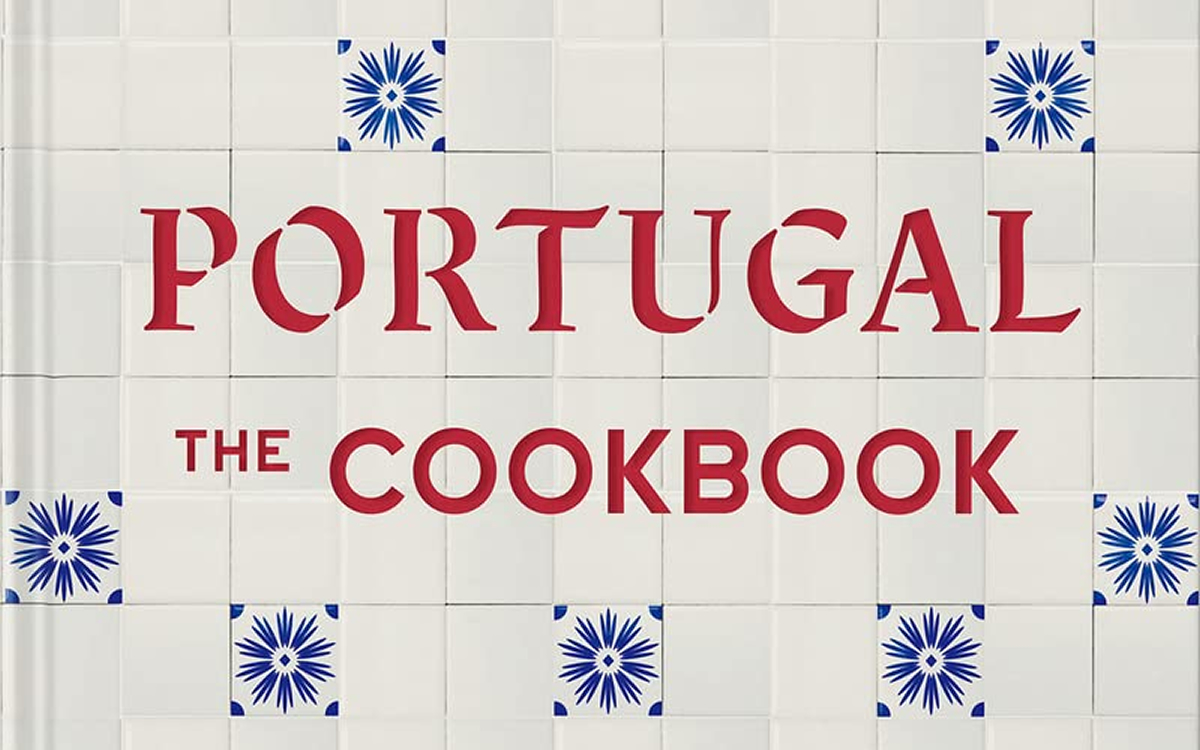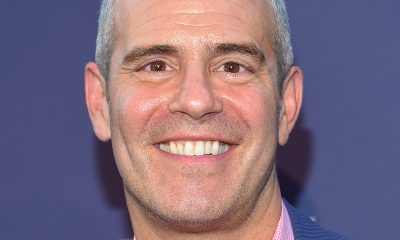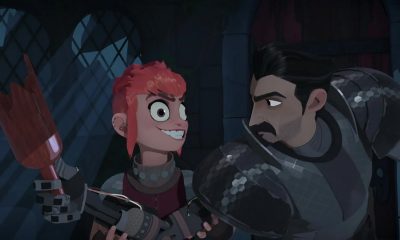Books
Celebrating Arab and Muslim heritage, art, gastronomy
Three new books open a window to influential cultures

As a college student, I hungered for Arab and Muslim representation. Prejudice against our communities was mainstream and demoralizing. Things, however, can sometimes change sooner than we expect.
Although Muslims and Arabs are still maligned, it is no longer as widespread and is often counterbalanced by allyship and, crucially, Muslim and Arab representation. From Hulu’s “Remy,” Netflix’s “Master of None,” HBO Max’s “Sort Of,” to the upcoming premiere of Disney+’s “Ms. Marvel” to Muslim characters on “Love Victor,” “Never Have I Ever,” and “Genera+ion,” Muslim characters and creators are now common. And these creators are diverse, proud, and often queer.
Mahersalah Ali is a two-time Oscar winner (one for the Black queer Best Picture winner “Moonlight”) and Riz Ahmed is the first Muslim to be nominated for Best Actor; he won an Oscar this year for a short film taking on British xenophobia, and spearheading an initiative to boost Muslim representation in Hollywood from screenwriters to actors.
From starving to satisfied, it has been quite a transformation in American culture. And it’s not only TV and film. Political representation isn’t novel anymore. I still remember when former Rep. Keith Ellison was asked on CNN to prove his loyalty by the conservative host Glenn Beck. Today, Reps. Ilhan Omar and Rashida Tlaib are progressive trailblazers. Irvine, Calif., has a Muslim mayor in Farrah Khan. Joe Biden has nominated the first Muslims to the federal judiciary, one has been confirmed and the other, civil rights lawyer Nusrat Choudhury, awaits Senate confirmation. And Biden, lest we forget, said “inshallah” (God willing) on the presidential debate stage. “We’ve made it,” I want to shout. But I know we’re still fighting for full normalization in American life.
Hence my excitement over three new books (two cookbooks and one art text) that feature Arab and Muslim heritage, art, and gastronomy.
Arab roots of Portuguese cooking
“To these new rulers [the Moors], cuisine was an art, and food a gift from God that should be consumed in moderation and shared with those in need,” writes Leandro Carreira, the author of “Portugal: The Cookbook.” It’s not surprising to learn that Arabs and Berbers shaped the evolution of Portuguese cuisine, but what’s striking is the nature of its legacy. In this cookbook of 700 recipes, half draw from the Moors.
When Moors conquered the Iberian Peninsula (Portugal and Spain) they brought with them not only warriors and administrators but architects, astronomers, poets, and, inter alia, cooks along with cookbooks, such as the Medieval “Kitab al Tabikh.”
The Moors introduced hydraulics that irrigated the farmland (along with orchards and leafy gardens) and beautified the land by planting citrus trees both for the fruit and scent. The list of crops introduced by Moors includes eggplant, artichoke, carrot, lentils, cucumber, and lettuce. The latter would later christen the residents of Lisbon, who are colloquially known as Alfachinhas (“little lettuces”). Moors popularized sour oranges, apricots, dates, melons, and watermelons; spices such as pepper and ginger; pickling of olives and nuts; sour marinade to preserve fish; rose water and orange blossom. The Moors’ vinegary salads were the precursor to gazpacho. The introduction of sugarcane later severed Portuguese colonization and fueled the slave trade, and transformed sugar from luxury to staple.
Naturally, the North African rulers brought couscous, the main consumed wheat until the late 16th century. To this day, northwestern Portuguese villagers prepare couscous using the methods and utensils introduced by Berbers 900 years ago.
The Moors cultivated hospitality and conviviality at the table along with the order in which food is served: soups followed by fish or meat and concluding with sweets. The Arabs’ cousins, the Jews played their part in shaping Portuguese cooking, too. Jews prepared their post-Sabbath meal by laying aside a slow-burning stew of meat, chickpeas, collard greens, hard-boiled eggs, and vegetables; today, the Portuguese call it Adafina. Jews introduced deep-fried vegetables and Portuguese missionaries later brought them to Japan and (voilà!) tempura.
In its history, “Portugal” evokes our interwoven humanity.
Arabiyya: Cooking as an Arab in America
The past few years have seen cookbooks with narratives of culture and personal journeys foregrounding recipes — many focused on Arab culture. “The Gaza Kitchen” by Laila el-Haddad and Maggie Schmitt and “The Palestinian Table” and “The Arabesque Table” by Reem Kassis, for example. To this list, we can add “Arabiyya: Recipes from the Life of an Arab in Diaspora” by the James Beard finalist Reem Assil.
For connoisseurs of Arab food in America, Reem is no stranger. Reem’s California, a bakery in Oakland and San Francisco, has acquired temple status for its use of California’s ingredients in the service of Arab dishes. A few years ago, the New York Times praised Reem’s as an “Arab Bakery in Oakland Full of California Love.” (The bakery was, sadly, the target of vulgar anti-Palestinian prejudice for its mural of Palestinian activist Rasmeah Odeh.)
Food was Reem’s saving grace. Facing a debilitating digestive disorder, and the wreck of familial stress, Reem left college and headed to the Bay Area live with her Arab uncle and Jewish aunt. Soothed by California’s climate, nature, and ingredients, she found mental and physical healing — and roots and purpose.
“Arabiyya” is a guide to California-based, Arab-rooted recipes alongside tales of Reem’s journey and her family’s. Her grandparents fled the Nakba — the 1948 “catastrophe” of the forced exile of roughly 750,000 Palestinians at the hands of Israeli troops — and the Naksa, the 1967 War that forced her family to decamp once more for Lebanon. The Lebanese Civil War led to one more flight to Greece, and finally, California.
Growing up American, Reem knew little of her grandmother’s resilience. After her sitty’s (colloquial Arabic for grandmother) passing, she pasted together tales from relatives of her grandmother’s determination to uphold Arab hospitality no matter where she landed. Her identity as a Palestinian was threatening both in Lebanon and America — but she walked with dignity. Arab hospitality meant that home was a safe comfort no matter the headwinds outside, and, at times, her grandmother went lengths to survive. A tale of sneaking out during a pause in fighting in Beirut became family lore: sitty couldn’t forget her lemons (who would serve fish without lemons?!) even after a rocket attack knocked her down.
Food’s healing and grounding became the thread uniting Reem with sitty. “I’ve come to realize that my grandmother, who loaded the table to its edges with tasty morsels of my favorite foods, lives through me,” Reem relates.
Reem’s journey to cook and bake as love and spontaneity opened a window to heritage — a family’s history and Arab pride. Her recipes (like the California Fattoush Salad where traditional tomatoes are swapped for oranges and citrus and fried sunchokes) overflow with love. “Arabiyya” is destined to be a classic among Arab-Americans.
Arab artists in their prime
Artists from the Arab world exhibiting in the West face a challenge: Our culture is ubiquitous in Western depictions but poorly understood; a dilemma for the artist who must inevitably “interrogate the stereotypes that spectators bring to the practice of looking at mythologized places,” in the words of critic Omar Kholeif in his review of the Abu Dhabi-born and NYC and Dubai-based Farah Al Qasimi.
Al Qasimi is one of five Arab artists featured in the new collection on “art’s next generation” entitled “Prime.” In “After Dinner 2” (2018), Al Qasimi captures the pressures of domestic life in her native UAE and the misconceptions westerners have about Arab domesticity. A mother stands behind her daughter kneeling on the couch while looking out at the window. The mother’s stance is recognizable to any child raised by an Arab mother: head tilted up and her arms stretched out — a plea for God’s mercy in the face of a stubborn child. The pink and white staging of the drapes and couch suggest the mother-daughter dispute is about marriage, the daughter having sights on another admirer. Neither the daughter’s nor the mother’s face is visible. The mother’s face overflows out of frame while the daughter’s rests behind the drapes. Al Qasimi’s photograph turns on its head the Western conception that Arab women are hidden “behind the veil;” their life is plain to see if one discards their preconceived notions and recognizes that mothers and daughters differ universally.
Gulf Arab states, soaked in oil and gas money, however, pander to Western standards. Alia Farid scrutinizes the imitation. Urbanization has upended life in the Gulf, including in the official representation of culture. Seeking to parade heritage, Gulf states are crafting historical narratives that embody less the realization of culture and more a contrived display that weaves together disparate artifacts, as Farid displays in a mock-museum exhibition titled “Vault” (2019). These exhibitions stand as staid advertisements — a defensive declaration: “We, too, have culture!” — placing together all manners of ancient and modern objects without telling a coherent story or inspiring new creativity.
In a juxtaposition, “At the Time of the Ebb” (2019) is a video installation documenting the celebration of Nowruz Sayadeen (Fisherman’s New Year) on the island of Qeshm, Iran. “We are brought close to culture at its grassroots level — the suggestion being that cultural life is built in communities as opposed to something to represent within the entanglements of a global museum industry, one that willfully neglects the culture it seeks to validate,” observe critics Hana Noorali and Lynton Talbot.
The Middle East’s wars and rivalries inform the work of Lebanese artist Rayyane Tabet, who works in Beirut and San Francisco. “Steel Rings” (2013) is a recreation of the Trans-Arabian Pipeline that was abandoned due to political upheaval but not before hundreds of miles of pipes were laid (and remain) underground. In Tabet’s exhibition, steel rings laid on the floor stand in for the pipeline’s route with engravings on the rings marking the locations passed underneath. The uncompleted pipeline is the only material project to exist between five regional nations. It is a sad statement on the region’s divisions that the only thing crossing that many borders is abandoned and buried steel. Humanization of the region’s troubles comes into relief in “Cyprus” (2015). The installation consists of a 1,800-pound wooden boat suspended from the ceiling. The boat was deployed by the artist’s father to flee Lebanon’s civil war but was unable to complete the journey to the neighboring island. Years later, the family found it on the coastline. Suspended in midair, solitary, the boat speaks to the anguish burdening people in the face of conflict — a hardship that is often insurmountable, like the boat drawback by the current. “Cyprus” centers our thoughts beyond the headlines — obscuring the human toil — and toward people struggling in their wake.
It is refreshing to see Arab artists creating thought-provoking art on their own terms. And so, the wheels of American life roll on as we crave our hearts on its road.
The Blade may receive commissions from qualifying purchases made via this post.
Books
New book offers observations on race, beauty, love
‘How to Live Free in a Dangerous World’ is a journey of discovery

‘How to Live Free in a Dangerous World: A Decolonial Memoir’
By Shayla Lawson
c.2024, Tiny Reparations Books
$29/320 pages
Do you really need three pairs of shoes?
The answer is probably yes: you can’t dance in hikers, you can’t shop in stilettos, you can’t hike in clogs. So what else do you overpack on this long-awaited trip? Extra shorts, extra tees, you can’t have enough things to wear. And in the new book “How to Live Free in a Dangerous World” by Shayla Lawson, you’ll need to bring your curiosity.

Minneapolis has always been one of their favorite cities, perhaps because Shayla Lawson was at one of Prince’s first concerts. They weren’t born yet; they were there in their mother’s womb and it was the first of many concerts.
In all their travels, Lawson has noticed that “being a Black American” has its benefits. People in other countries seem to hold Black Americans in higher esteem than do people in America. Still, there’s racism – for instance, their husband’s family celebrates Christmas in blackface.
Yes, Lawson was married to a Dutch man they met in Harlem. “Not Haarlem,” Lawson is quick to point out, and after the wedding, they became a housewife, learned the language of their husband, and fell in love with his grandmother. Alas, he cheated on them and the marriage didn’t last. He gave them a dog, which loved them more than the man ever did.
They’ve been to Spain, and saw a tagline in which a dark-skinned Earth Mother was created. Said Lawson, “I find it ironic, to be ordained a deity when it’s been a … journey to be treated like a person.”
They’ve fallen in love with “middle-American drag: it’s the glitteriest because our mothers are the prettiest.” They changed their pronouns after a struggle “to define my identity,” pointing out that in many languages, pronouns are “genderless.” They looked upon Frida Kahlo in Mexico, and thought about their own disability. And they wish you a good trip, wherever you’re going.
“No matter where you are,” says Lawson, “may you always be certain who you are. And when you are, get everything you deserve.”
Crack open the front cover of “How to Live Free in a Dangerous World” and you might wonder what the heck you just got yourself into. The first chapter is artsy, painted with watercolors, and difficult to peg. Stick around, though. It gets better.
Past that opening, author Shayna Lawson takes readers on a not-so-little trip, both world-wide and with observant eyes – although it seems, at times, that the former is secondary to that which Lawson sees. Readers won’t mind that so much; the observations on race, beauty, love, the attitudes of others toward America, and finding one’s best life are really what takes the wheel in this memoir anyhow. Reading this book, therefore, is not so much a vacation as it is a journey of discovery and joy.
Just be willing to keep reading, that’s all you need to know to get the most out of this book. Stick around and “How to Live Free in a Dangerous World” is what to pack.
The Blade may receive commissions from qualifying purchases made via this post.
Books
Story of paralysis and survival features queer characters
‘Unswerving: A Novel’ opens your eyes and makes you think

‘Unswerving: A Novel’
By Barbara Ridley
c.2024, University of Wisconsin Press
$19.95 / 227 pages
It happened in a heartbeat.
A split-second, a half a breath, that’s all it took. It was so quick, so sharp-edged that you can almost draw a line between before and after, between then and now. Will anything ever be the same again? Perhaps, but maybe not. As in the new book “Unswerving” by Barbara Ridley, things change, and so might you.

She could remember lines, hypnotizing yellow ones spaced on a road, and her partner, Les, asleep in the seat beside her. It was all so hazy. Everything Tave Greenwich could recall before she woke up in a hospital bed felt like a dream.
It was as though she’d lost a month of her life.
“Life,” if you even wanted to call it that, which she didn’t. Tave’s hands resembled claws bent at the wrist. Before the accident, she was a talented softball catcher but now she could barely get her arms to raise above her shoulders. She could hear her stomach gurgle, but she couldn’t feel it. Paralyzed from the chest down, Tave had to have help with even the most basic care.
She was told that she could learn some skills again, if she worked hard. She was told that she’d leave rehab some day soon. What nobody told her was how Les, Leslie, her partner, girlfriend, love, was doing after the accident.
Physical therapist Beth Farringdon was reminded time and again not to get over-involved with her patients, but she saw something in Tave that she couldn’t ignore. Beth was on the board of directors of a group that sponsored sporting events for disabled athletes; she knew people who could serve as role models for Tave, and she knew that all this could ease Tave’s adjustment into her new life. It was probably not entirely in her job description, but Beth couldn’t stop thinking of ways to help Tave who, at 23, was practically a baby.
She could, for instance, take Tave on outings or help find Les – even though it made Beth’s own girlfriend, Katy, jealous.
So, here’s a little something to know before you start reading “Unswerving”: author Barbara Ridley is a former nurse-practitioner who used to care for patients with spinal cord injuries. That should give readers a comfortable sense of satisfaction, knowing that her experiences give this novel an authenticity that feels right and rings true, no faking.
But that’s not the only appeal of this book: while there are a few minor things that might have readers shaking their heads (HIPAA, anyone?), Ridley’s characters are mostly lifelike and mostly likable. Even the nasties are well done and the mysterious character that’s there-not-there boosts the appeal. Put everyone together, twist a little bit to the left, give them some plotlines that can’t ruined by early guessing, and you’ve got a quick-read novel that you can enjoy and feel good about sharing.
And share you will because this is a book that may also open a few eyes and make readers think. Start “Unswerving” and you’ll (heart) it.
The Blade may receive commissions from qualifying purchases made via this post.
Books
Examining importance of queer places in history of arts and culture
‘Nothing Ever Just Disappears’ shines with grace and lyrical prose

‘Nothing Ever Just Disappears: Seven Hidden Queer Histories’
By Diarmuid Hester
c.2024, Pegasus Books
$29.95/358 pages
Go to your spot.
Where that is comes to mind immediately: a palatial home with soaring windows, or a humble cabin in a glen, a ramshackle treehouse, a window seat, a coffeehouse table, or just a bed with a special blanket. It’s the place where your mind unspools and creativity surges, where you relax, process, and think. It’s the spot where, as in the new book “Nothing Ever Just Disappears” by Diarmuid Hester, you belong.

Clinging “to a spit of land on the south-east coast of England” is Prospect Cottage, where artist and filmmaker Derek Jarman lived until he died of AIDS in 1994. It’s a simple four-room place, but it was important to him. Not long ago, Hester visited Prospect Cottage to “examine the importance of queer places in the history of arts and culture.”
So many “queer spaces” are disappearing. Still, we can talk about those that aren’t.
In his classic book, “Maurice,” writer E.M. Forster imagined the lives of two men who loved one another but could never be together, and their romantic meeting near a second-floor window. The novel, when finished, “proved too radical even for Forster himself.” He didn’t “allow” its publication until after he was dead.
“Patriarchal power,” says Hester, largely controlled who was able to occupy certain spots in London at the turn of the last century. Still, “queer suffragettes” there managed to leave their mark: women like Vera Holme, chauffeur to suffragette leader Emmeline Pankhurst; writer Virginia Woolf; newspaperwoman Edith Craig, and others who “made enormous contributions to the cause.”
Josephine Baker grew up in poverty, learning to dance to keep warm, but she had Paris, the city that “made her into a star.” Artist and “transgender icon” Claude Cahun loved Jersey, the place where she worked to “show just how much gender is masquerade.” Writer James Baldwin felt most at home in a small town in France. B-filmmaker Jack Smith embraced New York – and vice versa. And on a personal journey, Hester mourns his friend, artist Kevin Killian, who lived and died in his beloved San Francisco.
Juxtaposing place and person, “Nothing Ever Just Disappears” features an interesting way of presenting the idea that both are intertwined deeper than it may seem at first glance. The point is made with grace and lyrical prose, in a storyteller’s manner that offers back story and history as author Diarmuid Hester bemoans the loss of “queer spaces.” This is really a lovely, meaningful book – though readers may argue the points made as they pass through the places included here. Landscapes change with history all the time; don’t modern “queer spaces” count?
That’s a fair question to ask, one that could bring these “hidden” histories full-circle: We often preserve important monuments from history. In memorializing the actions of the queer artists who’ve worked for the future, the places that inspired them are worth enshrining, too.
Reading this book may be the most relaxing, soothing thing you’ll do this month. Try “Nothing Ever Just Disappears” because it really hits the spot.
The Blade may receive commissions from qualifying purchases made via this post.
-

 State Department4 days ago
State Department4 days agoState Department releases annual human rights report
-

 South America2 days ago
South America2 days agoArgentina government dismisses transgender public sector employees
-

 District of Columbia2 days ago
District of Columbia2 days agoCatching up with the asexuals and aromantics of D.C.
-

 Politics4 days ago
Politics4 days agoSmithsonian staff concerned about future of LGBTQ programming amid GOP scrutiny












